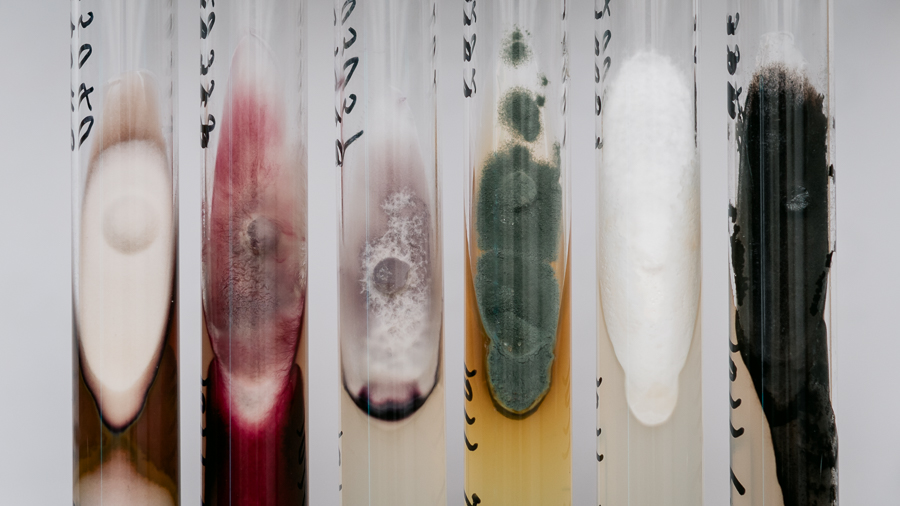About microorganism section

The Microorganism Section conducts exploration, collection, characterization, preservation, and distribution services of microorganism genetic resources in collaboration with five sub-banks located throughout Japan with the Research Center of Genetic Resources, NARO as the central bank. The targeted genetic resources are those listed below related to agricultural and food products.
The Microorganism Section has been dispatching both domestic and overseas exploration teams every year and making efforts to survey distributions and variations of microorganism genetic resources as well as to collect versatile microorganism genetic resources. The total number of newly registered microorganism genetic resources amounts to about 300 items per year including items obtained by exchanges with domestic and overseas research institutes. Parts of the activities of such exploratory collections are made open to the public in the Annual Report on Exploration and Introduction of Microbial Genetic Resources [ja].
The collected microorganism genetic resources are identified and characterized by expert researchers. Cultivation is conducted at the same time. Efforts are made for long-term preservation and maintenance under stable conditions, including vacuum-freeze-dried or frozen fungal forms. The microorganism genetic resources assigned with descriptors called MAFF numbers total about 37,600 strains as of 2024.
The information on the preserved microorganism genetic resources is added to the database from time to time and is made open to the public through the Internet. More detailed information on additional specific microorganism genetic resources is compiled in the MAFF Microorganism Genetic Resources Manual [ja], which can be viewed from this site.
The microorganism genetic resources of the NARO Genebank can be used for testing/research or educational purposes. Approximately 2000 strains of microorganism genetic resources have been distributed every year to domestic and overseas research institutes, etc., and they have contributed to a wide range of research and development, including classification and identification, analyses of diversity and physiology/ecology, elucidation of interactions with animals and plants, and development of biological control materials and new processed foods. The distributed microorganism genetic resources include items whose entire genome information has been analyzed, such as Xanthomonas oryzae pv. oryzae and Mesorhizobium loti; and the Microorganism Genetic Resources are expected to make contributions as a foundation for microorganism research focusing on agriculture, food, and related fields.
Currently available microorganism genetic resources
| Category | Taxon | Number |
|---|---|---|
| Fungus (including mushrooms) | Fusarium, Colletotrichum, Pyricularia, Rhizoctonia, Fulvia, etc. | 17,933 |
| Yeast | Saccharomyces, Candida, Moesziomyces, Zygosaccharomyces, Pichia, etc. | 588 |
| Oomycete | Phytophthora, Pythium, Globisporangium, Phytopythium, Achlya, etc. | 1,249 |
| Bacterium | Pseudomonas, Xanthomonas, Bradyrhizobium, Erwinia, Bacillus, etc. | 5,751 |
| Actinomycete | Streptomyces, Nocardioides, Nocardia, Nocardiopsis, Lentzea, etc. | 232 |
| Plant virus | Potyvirus, Cucumovirus, Tobamovirus, Orthotospovirus, Fabavirus, etc. | 752 |
| Viroid | Apscaviroid, Pospiviroid, Pelamoviroid, Apscaviroid, Cocadviroid, etc. | 18 |
| Bacteriophage | Bacillus subtilis (natto) phage, Clavibacter michiganensis subsp. michiganensis phage, Xanthomonas oryzae pv. oryzae phage, Inovirus, PhiKMV-like viruses | 56 |
| Insect virus | Granulovirus, Silkworm Densonucleosisvirus I, Silkworm Infectious flacherievirus, Xestia c-nigrum NPV, Spodoptera exigua NPV, etc. | 24 |
| Others | Polysphondylium, Nosema, Vairimorpha | 6 |
| Total | 26,609 |